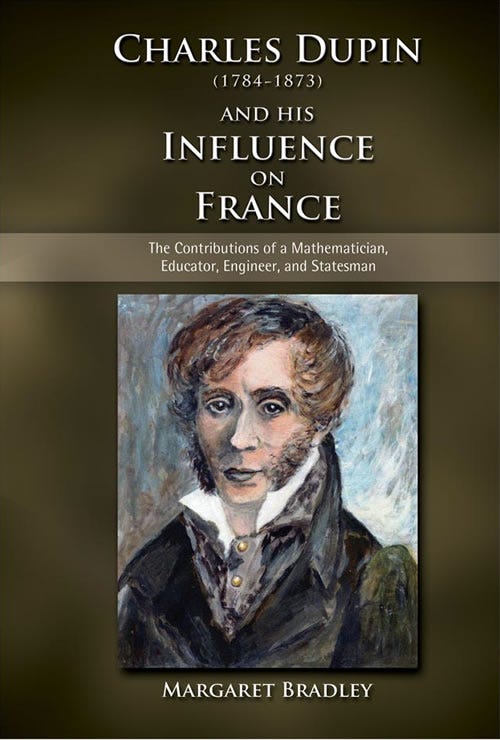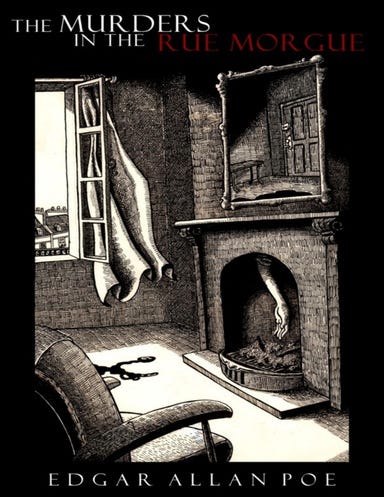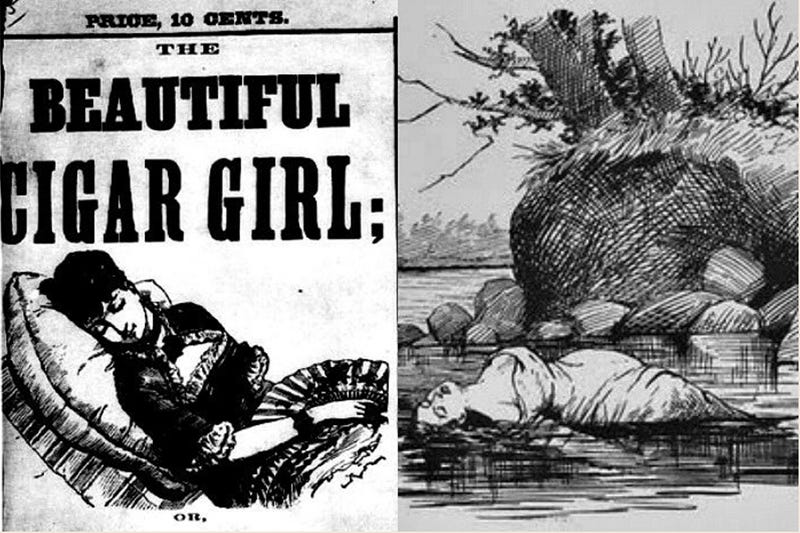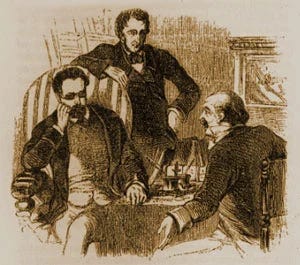Edgar Poe as Cultural Warrior Part 3
Poe’s Tales of Ratiocination and the Real Inspector Dupin
The following is part 3 of an ongoing series devoted to bringing justice to the life of America’s greatest literary genius and also solving the 170 year murder mystery of Edgar Allan Poe. It is also a sister series to The Occult Tesla. Click here for part 1 and here for part 2.
Poe’s Tales of Ratiocination
It is here interesting to note that the method of diagnostic analysis which Edgar Poe employed in Mäelzel’s Chess Player (1836) was the basis of his creation of a new literary genre known as detective mysteries.
This new genre officially originated in 1841 with Poe’s character Inspector C. Auguste Dupin and which Poe himself called his ‘Tales of Ratiocination’.
All of Poe’s detective mystery tales feature narratives involving exercises in problem solving through the first person account of Dupin’s unnamed assistant. Poe’s Inspector Dupin expressed qualities of a fully integrated creative mind capable of wielding imagination and reason in total harmony based on a recognition of the limits of deductive/inductive reasoning.
In 1846, Poe wrote: “These tales of ratiocination owe most of their popularity to being something in a new key. I do not mean to say that they are not ingenious—but people think them more ingenious than they are—on account of their method and air of method.”
In 1887, Poe’s tales of ratiocination and his invention of detective stories, would be plagiarized and turned inside out by a London-based operation run through the Hermetic Order of the Golden Dawn and a figure known as Arthur Ignatius Conan Doyle. [2]
The Dupin detective stories took the form of The Murders on the Rue Morgue (1841), The Murder of Marie Roget (1842) and The Purloined Letter (1844).
The Mystery of C. August Dupin
It is additionally important to point out that the character was not a complete fictional creation, but based upon an extremely important figure associated with Marquis Lafayette in France whom we encountered in part 1 of this series as the leader of the European Society of Cincinnati- which Poe served as a third generation member.
In his groundbreaking 1981 essay ‘The Lost Soul of America’, the historian Allan Salisbury noted that “Poe could have been referring to one person only: Charles A. Dupin of Paris, a leading figure in the Ecole Polytechnique circles of Gaspard Monge, Lazard Carnot, and their associates. It is the Ecole Polytechnique method of scientific investigation that is the subject of Poe’s detective tales, or ‘tales of ratiocination,’ as Poe more properly termed them.”
The Real Dupin
Charles Dupin (1784-1873) was a leading member of the French military intelligentsia, naval engineer, scientist, revolutionary and protege of Gaspard Monge (leader of the Ecole Polytechnique) who had organized a powerful new teaching technique based upon teaching cadres around analytic geometry, chemistry, moral philosophy and aesthetical education.
Like Gaspard Monge, Dupin was both a poet and a geometer who discovered several new techniques for mapping non-linear topographies including the Dupin Cyclide and Dupin Indicatrix. Dupin was also a major force behind industrial development of France, innovated new techniques in canal building, and the application of steam engines to the economy. He was also a leading educational reformer in France where he worked as professor at the Conservatoire des Arts et Métiers, during which time he created new humanist curriculums based on constructive geometry, ancient languages, classics and a merging of the arts and science.
Jacques Cheminade noted the following of Dupin’s reforms and philosophy of education:
“Dupin, who started his classes in 1824, continuing them till 1854, adressed himself to an audience of literate laymen and in particular to skilled and semiskilled workers. His idea was, through quantitative and qualitative expansion of the social base for industrial development, to reverse the monarchy's industrial orientation toward production of luxury goods, the pathetically famous "articles de Paris"… Dupin's drive was to put the central conception of the higher hypothesis consciously into focus for the instruction of the broadest possible audience. In his speech ‘The Influence of the Working Class on the Progress of Industry’, he defines his immediate goal as the raising of workers who know only the basic four rules of arithmetic up to the level of being finally conscious agents of industrial progress.” [1]
It is noteworthy that Charles Dupin was also a scientist-statesman who became a senator of France in 1853.
It was this movement of republican thinkers around Dupin and Monge, operating within France’s military that organized a resistance to the restoration of oligarchism after the 1815 Congress of Vienna and worked to bring the Marquis Lafayette to power during the 1830 July revolution.
Describing Monge’s reforms at the Ecole Polytechnique and it’s power of shaping integrating citizen-statesmen, Charles Dupin likened it to “the school of Pythagoras as Plato” and wrote: “It was an eminently philosophical, eminently useful and eminently rational idea, that of giving each student in a public service a sufficiently general knowledge of all the other services.”
Having worked alongside the Lafayette networks in France during this period (as outlined in part 1 of this series) and having played a direct role within this academy through its connections to West Point while Poe was still a student, Allan Salisbury’s 1981 thesis stands as the strongest explanation of the origins of Poe’s character to this day.
Poe’s Intention to Render the Process of Creative Analysis Transparent
It is also important to recognize that Poe didn’t solely write stories for entertainment value, but for the purpose of mass education of the citizens of the republic. As Poe himself let it be known, his intention was to shed light on the nature of what a healthy human mind can do, and also showcase pitfalls into false modes of logic that will lead people into perversity, crime and folly. In the Murders on the Rue Morgue (featuring the first appearance of Poe’s character C. Dupin, Poe has his “fictional” inspector state:
“There are few persons who have not, at some period of their lives, amused themselves in retracing the steps by which particular conclusions of their own minds have been attained. The occupation is often full of interest; and he who attempts it for the first time is astonished by the apparently illimitable goal.”
The Murders on the Rue Morgue
In the first of Poe’s detective stories featuring Inspector Dupin and his anonymous assistant, Poe deals with a fictional murder of two women in Paris.
Their deaths are terribly gruesome with one woman’s body found deep within the narrow shaft of a chimney. The nature of the bizarre crime defies all uses of conventional logic and French police are completely baffled.
As supernatural explanations become the only possible solution to this illogical crime, Poe draws the reader into total perplexity as logic breaks down with every new fact. However, before fully embracing supernatural explanations, Poe’s detective C. Auguste Dupin solves the crime by recognizing an overlooked fact that a week earlier, an orangutan had been seen in London, having escaped the propriety of a London sailor.
If treated from a purely literal standpoint, Poe’s tale appears to be absurd and contains no obvious means of accounting for the true solution to the crimes within the text. However, when approached from the standpoint of an intervention into the reasoning processes of citizens that might be inclined to leap to supernatural explanations before exercising all possibilities in the natural world, Poe’s intention, and the brilliance of this piece becomes clear.
Years later, Arthur Ignatius Conan Doyle would take Poe’s technique of laying out an extremely elaborate crime with a multitude of facts that appear to be solvable by reason, yet before any rational explanation could emerge, infuses a supernatural punchline into the story which undermines the reader’s faith in using reason to solve problems. This abomination of logic was perfectly expressed in Doyle’s 1880 ‘The American’s Tale’ featuring a man-eating Venus fly trap as the culprit for a strange murder.
In Doyle’s 1883 story ‘The Silver Hatchet’, an elaborate series of murders is committed with a particular hatchet. Before the logical mind can aduce the killer, it is revealed that the real killer is the hatchet itself, which has been subject to a magical incantation compelling anyone touching it to murder.
As we will come to see in part 7 (‘Why Doyle Despised Poe’), this perversion of Poe’s tales of ratiocination is again turned inside out with the creation of Doyle’s character Sherlock Holmes in 1887.
The Murder of Marie Roget
In Poe’s second murder mystery titled ‘The Murder of Marie Roget’ published in 1842, Inspector C. Auguste Dupin is challenged to solve the mystery of a murder of a beautiful young woman in Paris.
Poe’s fictional narrative was actually based upon events surrounding the very real 1841 murder of a New York woman named Mary Cecilia Rogers who had worked as a server in a popular New York Cigar lounge, which also happened to be an intelligence hub of the young United States - frequented by leading members of the intelligentsia- including James Fenimore Cooper, Washington Irving and Edgar Allan Poe.
The ritual murder of Mary Rogers outside of a peculiar location dubbed ‘Sibyl’s Cave’ next to the Elysian Fields of New Jersey represents an extremely important element to the occult takeover of the USA which Poe was combating and will be developed more fully in a future installment of this series.
The Purloined Letter
In Poe’s third and final murder mystery dubbed The Purloined Letter (published in 1844), the mind of Inspector Dupin is contrasted with a French prefect and an armada of police officers who are locked in the invisible cage of sterile deductive/inductive logic forever unable to make a discovery and solve a mysterious criminal case.
In the famous story, the exasperated prefect seeks the assistance of Dupin after weeks of painstakingly searching the home of a figure who is the prime suspect in the theft of a letter which holds vast political ramifications (and vast rewards if it is recovered). The French prefect describes in agonizing detail how his officers have spent weeks taking apart every segment of the suspect’s home in search of the letter…but to no avail.
The frustrated prefect describes how his men have investigated every square inch of the residence:
“We took our time…First, we examined the furniture in every room. We opened all the drawers. We looked under the rugs. We searched behind all the paintings on the walls. We opened every book. We removed the boards of the floor. We even took the tops off the tables to see if he had hidden the letter in the table legs. But we cannot find it. What do you advise me to do?”
Every technique of inquiry known to them has been exhausted and their failure has caused them to seek Dupin’s help.
After some days elapse, Dupin uncovers the letter and gives it to the prefect who giddily pays Dupin the generous reward, leaving the inspector’s home, letter in hand. Dupin’s friend (and the story’s narrator) sits awestruck how this feat occurred. Dupin then explains how he was able to accomplish this seemingly impossible task by first sharing his insight into the failures of the thinking of the prefect and officers:
“The Prefect and his cohort fail so frequently, first, by default of this identification, and, secondly, by ill-admeasurement, or rather through non-admeasurement, of the intellect with which they are engaged. They consider only their own ideas of ingenuity; and, in searching for anything hidden, advert only to the modes in which they would have hidden it. They are right in this much—that their own ingenuity is a faithful representative of that of the mass; but when the cunning of the individual felon is diverse in character from their own, the felon foils them, of course. This always happens when it is above their own, and very usually when it is below. They have no variation of principle in their investigations; at best, when urged by some unusual emergency—by some extraordinary reward—they extend or exaggerate their old modes of practice, without touching their principles.”
While I will not ruin the story for you, as no summary could replace the subjective act of reading the work as Poe intended it, it is safe to say that Poe’s positive insight into the nature of the culprit gave him the power to discover what no deductive/inductive thinker could accomplish. Here Dupin notes that the culprit has won renown as both a poet and master of the differential calculus stating:
“I know him well; he is both. As poet and mathematician, he would reason well; as mere mathematician, he could not have reasoned at all, and thus would have been at the mercy of the Prefect.”
It was Dupin’s insight into the failure of linear mathematical logic and the healthy maturation of scientific and aesthetic capacities that true creative leaps into discovery concepts may occur. Although expressed most transparently in the Purloined Letter, this theme is replicated beautifully in Poe’s short stories Descent into the Maelstrom, The System of Dr. Tar and Professor Feather, Maelzel’s Chess-Player, The Murders on the Rue Morgue, and The Gold Bug… to name but a few.
Perhaps more than Poe’s devastating psychological studies of the oligarchical mental condition in such locations as the Fall of the House of Usher, Masque of the Red Death, Imp of the Perverse, Tell Tale Heart, Cask of Amontilado, the Black Cat or William Wilson (featuring studies of self-delusion and their consequences), the oligarchy especially despised Poe’s attacks on the plague of mysticism sweeping America in the early 19th century.
Footnotes
[1] In the referenced speech, Dupin beautifully states: “Nature limited the needs of man, but the creative power received by man from the Supreme Intelligence leads him to continuously discover and perfect: it is to that power that we owe the successive advancements in agriculture, trade, industry and in our whole civilization.”
[2] This story will be developed in greater detail in part 9 of this series
Appendix: A Word from the Real Charles Dupin
Charles Dupin’s Insight into the healthy unification of creativity and science was laid out in his 1819 treatise “Historical Essay on the Contributions and Scientific Works of Gaspard Monge’:
“General and purely rational geometry, of which descriptive geometry is only the graphic translation… one’s mind must be especially trained in this general geometry. One must be able to represent the shapes of bodies in space, and to ideally combine these shapes by the sole power of imagination. The mind learns to see inwardly and with perfect clarity the individual lines and surfaces, and families of lines and surfaces; it acquires a feeling for the character of these families and individuals; it learns to see them, combine them, and foresee the results of their intersections and of their more or less intimate contacts, etc. Thus the new geometry greatly strengthens the imagination; it teaches you how to grasp a vast collection of shapes quickly and precisely, to judge their similarities and differences and their relations of size and position ...” Describing road and infrastructure building “… engineering drawings are needed only for limited areas in which the best route to follow is easily determined from the overall direction discovered by the geometric overview. It was this grand manner of considering the shapes of nature, which was discovered by the students of Monge.” [a larger treatment of this topic can be found in David Shavin’s 2017 essay Poe’s Poet-Mathematician: Evariste Galois]













Fascinating work, thank you! What commendable and interesting thinkers there used to be...what a golden age of shadow renaissance.
👏 your work is so amazing and enjoyable to read. I share your work with those who can appreciate you❤️👍